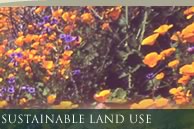An appellate court decisively agreed with EHL that California's fire agency, Cal Fire, did not address the consequences of converting native plants to flammable grasses and weeds.
In 2013, EHL began filing comment letters on Cal Fire’s plan – called the Vegetation Treatment Program, or VTP – to remove or otherwise “treat” hundreds of thousands of acres of chaparral and coastal sage scrub with an objective of reduced fire hazard. Our concern was that these “landscape level” treatments – often distant from human communities – would accelerate the conversion of native habitat to highly flammable invasive species. Due to frequent human-caused fires, this process is already underway. Such “type conversion” of shrublands would not only harm wildlife, but the treatments – herbicides, mowing, mastication, prescribed fire – would be counterproductive from a safety standpoint. This is in contrast to forest ecosystems, where large-scale treatments may be effective.
During the CEQA process – which ultimately consisted of three environmental impact reports – EHL marshalled an array of experts to provide scientific information. We also offered collaboration and suggestions as to alternative measures. Cal Fire admitted that the treatments would not help in the wind-driven fires that cause loss of life and property, but repurposed the program for non-wind-driven fires. What the court found was that Cal Fire ignored the fire safety implications of resulting “type conversion.” Another legal defect in the Environmental Impact Report (EIR) was improperly deferring mitigation to individual future projects.
What’s next? Just “fixing” the EIR won’t necessarily create sound policies and practices. Rather, California needs a good VTP to guide best practices and to mitigate impacts. We offer to work with Cal Fire to rethink the program so that it captures today’s scientific consensus. In this regard, we are encouraged by recent recommendations from a state-level fire task force (see article below).


